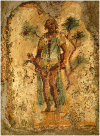Diphallia: literature review and proposed surgical classification system
- PMID: 35678221
- PMCID: PMC9539879
- DOI: 10.1111/ans.17846
Diphallia: literature review and proposed surgical classification system
Abstract
Background: Diphallia occurs once in 5-6 million births, with no two patients presenting with the same anatomical variation. Here we discuss a review of diphallia case reports, as well as present a new surgical classification system based on the soft tissue composition of the two phalluses, the anatomy of the urethra present within the most normal phallus and the bladder configuration.
Methods: Eighty-seven diphallia case reports were collected and analysed, excluding those presented in animals and articles that were non-English, with the results compiled to provide an in-depth reference of the specific anatomy found in diphallia patients and the associated abnormalities.
Results: Our proposed classification system was then applied to each patient and the most common configuration base on our classification system presented, along with commonly seen associated anomalies.
Conclusion: The reviewed cases represent a subset of the most unique diphallia patients; thus, several cases may be left unreported. Future reports can then be categorized, aiding as a reference, and potentially building on the classification, should the patient not fit into a specific group, leading to an expansion of the classification system.
Keywords: classification; congenital anomaly; diphallia; duplicate penis; urethral duplication.
© 2022 The Authors. ANZ Journal of Surgery published by John Wiley & Sons Australia, Ltd on behalf of Royal Australasian College of Surgeons.
Conflict of interest statement
The review is not registered, and the protocol was not prepared. Support from the Paediatric Surgery and Urology Department at the Queensland Children's Hospital. None declared.
Figures
References
-
- Fahmy M. Congenital anomalies of the penis. Springer International Publishing Switzerland, 2017. Penile Duplication, pp. 73–8.
-
- Galassi FM, Henneberg M, Habicht ME, Rühli FJ. Diphallia in the ancient world: insights from a pompeian fresco (70‐79 AD). Urology 2016; 22: 281–2. - PubMed
-
- Cecil AB. Anatomy, anomalies and injuries of the penis, Vol. 162. H. Cabot. Philadelphia: Lea & Febiger, 1936.
-
- Hollowell F Jr, Witherington R, Ballagas AJ et al. Embryological consideration of diphallus and associ‐ ated anomalies. J. Urol. 1977; 111: 728–32. - PubMed
-
- Acimi S. Complete diphallia. Scand. J. Urol. Nephrol. 2004; 38: 446–7. - PubMed
Publication types
MeSH terms
LinkOut - more resources
Full Text Sources


